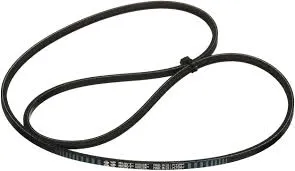- Arabic
- French
- Russian
- Spanish
- Portuguese
- Turkish
- Armenian
- English
- Albanian
- Amharic
- Azerbaijani
- Basque
- Belarusian
- Bengali
- Bosnian
- Bulgarian
- Catalan
- Cebuano
- Corsican
- Croatian
- Czech
- Danish
- Dutch
- Afrikaans
- Esperanto
- Estonian
- Finnish
- Frisian
- Galician
- Georgian
- German
- Greek
- Gujarati
- Haitian Creole
- hausa
- hawaiian
- Hebrew
- Hindi
- Miao
- Hungarian
- Icelandic
- igbo
- Indonesian
- irish
- Italian
- Japanese
- Javanese
- Kannada
- kazakh
- Khmer
- Rwandese
- Korean
- Kurdish
- Kyrgyz
- Lao
- Latin
- Latvian
- Lithuanian
- Luxembourgish
- Macedonian
- Malgashi
- Malay
- Malayalam
- Maltese
- Maori
- Marathi
- Mongolian
- Myanmar
- Nepali
- Norwegian
- Norwegian
- Occitan
- Pashto
- Persian
- Polish
- Punjabi
- Romanian
- Samoan
- Scottish Gaelic
- Serbian
- Sesotho
- Shona
- Sindhi
- Sinhala
- Slovak
- Slovenian
- Somali
- Sundanese
- Swahili
- Swedish
- Tagalog
- Tajik
- Tamil
- Tatar
- Telugu
- Thai
- Turkmen
- Ukrainian
- Urdu
- Uighur
- Uzbek
- Vietnamese
- Welsh
- Bantu
- Yiddish
- Yoruba
- Zulu
Қыр . 04, 2024 16:13 Back to list
conveyor flat belt
Conveyor Flat Belts A Vital Component in Modern Industry
In the realm of modern manufacturing and logistics, conveyor systems play a pivotal role in enhancing productivity and efficiency. Among the various types of conveyor systems, flat belts stand out as a fundamental component. These conveyor flat belts are designed to transport goods and materials across different processes, ensuring seamless movement within factories, warehouses, and distribution centers.
Understanding Conveyor Flat Belts
Conveyor flat belts are typically made from several materials, including rubber, plastic, or fabric. The choice of material largely depends on the specific application and the types of goods being transported. Rubber belts are renowned for their durability and slip resistance, making them ideal for heavy loads. On the other hand, plastic belts offer flexibility and are often used in environments where hygiene is a concern, such as food processing industries.
Flat belts have a simple yet effective structure, consisting of a continuous loop that can be driven by pulleys at either end. The friction between the belt and the pulleys allows for the movement of goods placed on the belt. This design not only facilitates the transportation of a wide range of products but also ensures smooth operation, minimizing wear and tear on both the belt and the machinery.
Advantages of Conveyor Flat Belts
One significant advantage of conveyor flat belts is their versatility. They can be utilized in various industries, from automotive manufacturing to food packaging. Their flat surface can accommodate an array of items, including boxes, bags, and even irregularly shaped products. This makes conveyor flat belts an ideal choice for production lines that require flexibility in handling diverse materials.
conveyor flat belt

Additionally, conveyor flat belts can be tailored to fit specific operational needs. For instance, they can be equipped with side guides or specialized coatings to enhance their functionality. This customization enables companies to optimize their conveyor systems for specific tasks, improving overall operational efficiency.
Maintenance and Care
While conveyor flat belts are robust, they do require regular maintenance to ensure long-lasting performance. Proper care includes routine inspections for wear, adjusting tensions, and keeping the belts clean to prevent slippage and damage. Neglecting maintenance can lead to premature wear and tear, which may disrupt production processes and lead to costly downtime.
Furthermore, organizations should also consider the importance of training personnel on proper handling and maintenance of conveyor systems. Well-trained staff can identify potential issues early on, ensuring that any interventions necessary are carried out promptly.
Future Developments
As technology continues to evolve, the future of conveyor flat belts looks promising. Innovations in materials and automation are likely to enhance their efficiency and effectiveness. For instance, the integration of sensors and IoT (Internet of Things) technology can provide real-time monitoring of belt performance, allowing for predictive maintenance and reducing unplanned downtime.
In conclusion, conveyor flat belts are an essential element in the modern industrial landscape, facilitating the efficient movement of goods in a wide range of settings. Their versatility, coupled with advancements in technology, will likely continue to enhance their role in manufacturing and logistics for years to come. As businesses seek to streamline operations, understanding and investing in high-quality conveyor flat belts will be key to maintaining a competitive edge in the market.
-
Korean Auto Parts Timing Belt 24312-37500 For Hyundai/Kia
NewsMar.07,2025
-
7PK2300 90916-T2024 RIBBED BELT POLY V BELT PK BELT
NewsMar.07,2025
-
Chinese Auto Belt Factory 310-2M-22 For BMW/Mercedes-Benz
NewsMar.07,2025
-
Chinese Auto Belt Factory 310-2M-22 For BMW/Mercedes-Benz
NewsMar.07,2025
-
90916-02660 PK Belt 6PK1680 For Toyota
NewsMar.07,2025
-
drive belt serpentine belt
NewsMar.07,2025

